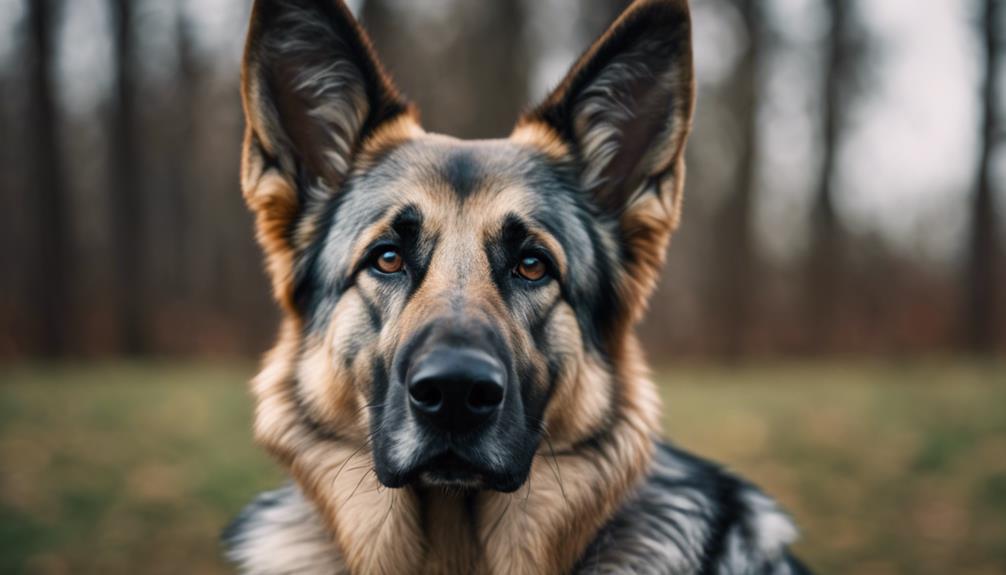🐾 Paw-some Partnership Alert! 🐾
As a pack of German Shepherd enthusiasts at MixGermanShepherd.com, we're always sniffing out the best products for our furry friends. Guess what? When you fetch something from Amazon through our links, we earn a little treat! 🦴
Have you ever wondered what sets Isabella German Shepherds apart from their traditional counterparts? The unique Isabella coloration of these dogs is just the beginning of what makes them stand out. Their distinct appearance is not the only factor that makes them a breed worth exploring. Stay tuned to uncover more intriguing aspects that contribute to the uniqueness of Isabella German Shepherds.
Key Takeaways
- Isabella GSDs possess a rare diluted coat color due to specific gene combinations.
- They are prone to health issues like Color Dilution Alopecia and hip dysplasia.
- Their behavior traits include loyalty, intelligence, and a need for proper training.
- Specialized care, regular vet check-ups, and proactive health management are essential for their well-being.
Isabella German Shepherd Coat Color Rarity
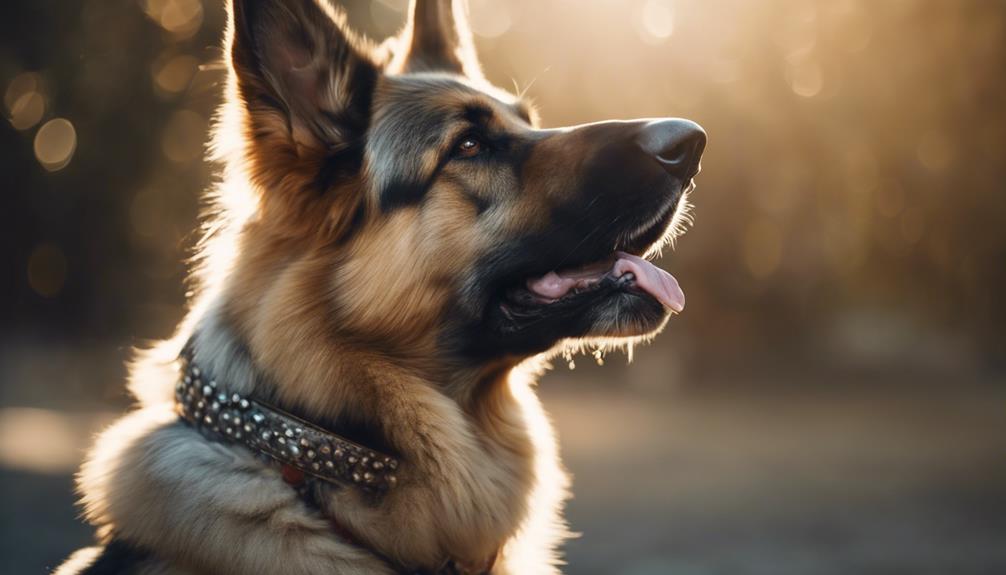
The rarity of the Isabella German Shepherd coat color stems from a unique double dilution process involving specific genes within the breed. Isabella German Shepherds exhibit a diluted liver coat color, distinct from standard blue or liver coats, with shades ranging from pale greyish-brown to light fawn. This rare color variation is a result of a specific combination of the dilution gene interacting with the blue and liver genes present in the breed.
The Isabella coat color is a product of inheriting two copies of the dilution gene, leading to a lighter and softer hue compared to the more common coat colors found in German Shepherds. This double dilution process alters the expression of the color genes, resulting in the unique Isabella shade that sets these dogs apart.
Understanding the intricate relationship between the liver gene and the dilution gene is crucial in unraveling the mystery behind the formation of the Isabella coat color in German Shepherds. This specific genetic makeup is what makes Isabella German Shepherds a fascinating and distinctive breed cherished by many for their rare and beautiful coat color.
Genetic Foundations of Isabella GSDs
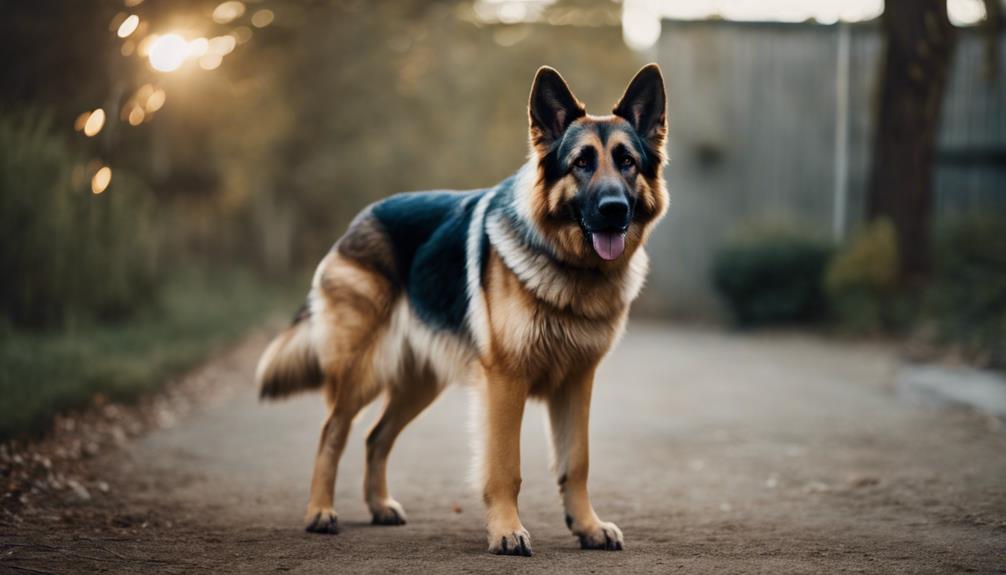
Through a complex interplay of genetic factors, Isabella German Shepherds exhibit a distinctive coat color that sets them apart from their counterparts in the breed. This unique coat color is a result of specific gene combinations involving the dilution and liver genes. Here are some key genetic foundations of Isabella GSDs:
- Isabella German Shepherds have a unique coat color due to a double dilution process involving blue and liver genes.
- The Isabella color is a result of inheriting two copies of the dilution gene, leading to a diluted liver shade coat.
- The liver gene interacts with the dilution gene to create the distinct Isabella color, different from standard blue or liver coats.
- Understanding the genetic basis of Isabella GSDs involves recognizing the roles of the dilution and liver genes in coat color formation.
To express the rare Isabella coat coloration, Isabella German Shepherds require specific gene combinations from both parents. This intricate genetic mechanism contributes to the exceptional beauty and uniqueness of Isabella GSDs within the breed.
Physical Characteristics of Isabella Shepherds
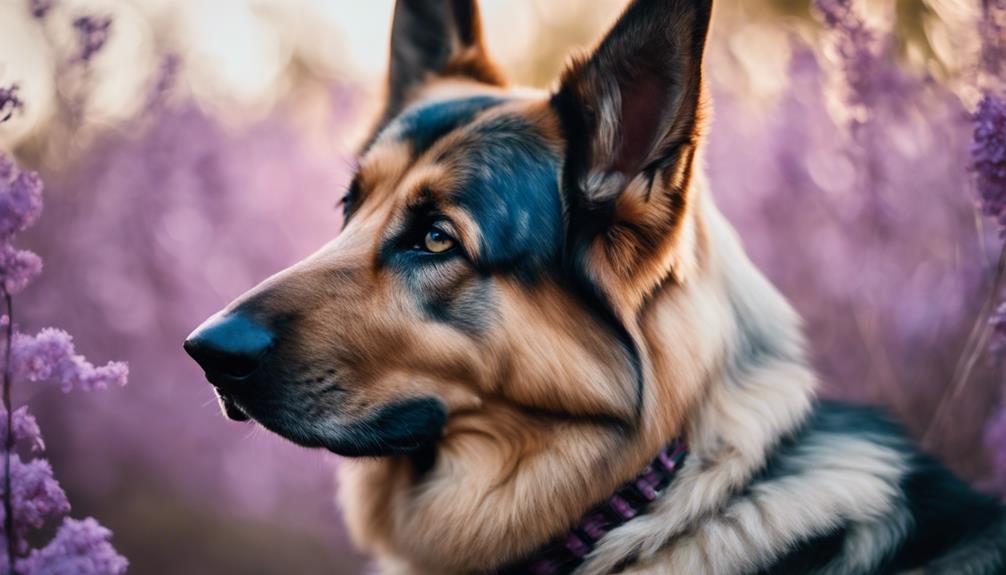
Exploring the physical attributes of Isabella German Shepherds reveals a distinctive combination of rare diluted liver shade coat coloring and a robust, muscular stature. These unique dogs exhibit a coat color that ranges from pale greyish-brown to light fawn, setting them apart from traditional German Shepherds. Their sturdy build, with males standing 24-26 inches tall and females 22-24 inches, gives them a powerful appearance.
However, along with their striking appearance, Isabella GSDs are prone to specific health issues due to their unique coloration. Conditions like Color Dilution Alopecia (CDA) and hip dysplasia are common concerns. Therefore, regular vet check-ups are crucial to monitor and address any emerging health issues promptly. This is especially important for keeping an eye out for signs of CDA as Isabella GSDs age.
To ensure the well-being of Isabella German Shepherds, proper care and grooming practices are essential. Regular grooming not only maintains the beauty of their rare coat but also helps in early detection of any skin or coat issues. By providing adequate care, attention, and proactive health management, owners can help Isabella GSDs lead healthy and fulfilling lives.
Health Considerations for Isabella GSDs
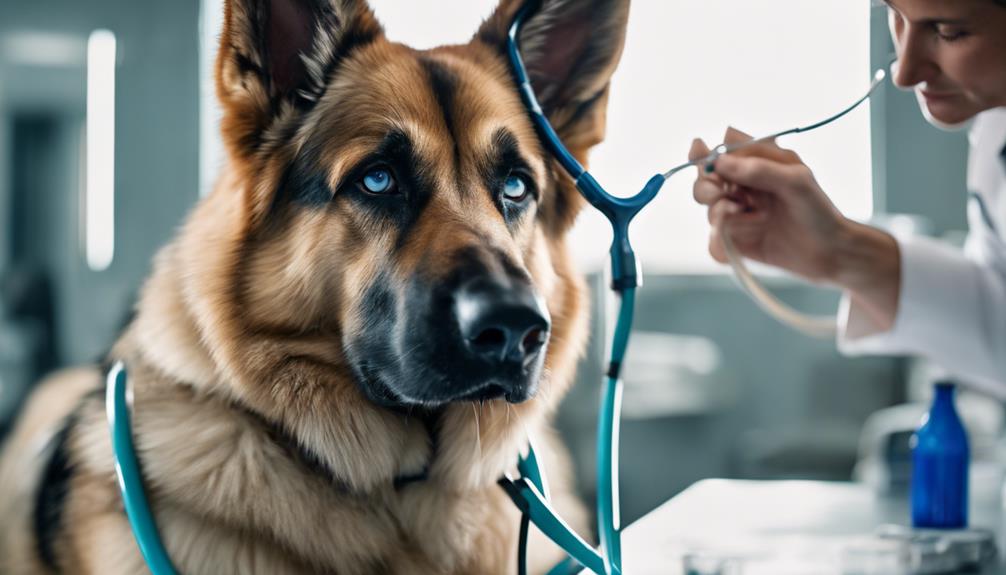
Considering the unique coloration of Isabella German Shepherds, it is imperative to understand and address the specific health considerations associated with this breed. Isabella German Shepherds are prone to certain health issues that are influenced by their unique color. Here are some key health considerations for Isabella GSDs:
- Isabella German Shepherds are predisposed to conditions like hip dysplasia and Color Dilution Alopecia (CDA) due to their unique color.
- Regular vet check-ups are crucial for monitoring signs of CDA and other common health problems in Isabella GSDs.
- Proper care, grooming, and monitoring are essential for maintaining the health and well-being of Isabella German Shepherds.
- Health issues such as bloat and hip dysplasia are common in Isabella GSDs, necessitating proactive health management.
To ensure the well-being of Isabella German Shepherds, proactive health management is essential. This includes regular vet visits, monitoring for signs of hip dysplasia and CDA, and providing proper care and grooming. By understanding the specific health risks associated with Isabella GSDs and taking proactive measures, you can help extend their lifespan and enhance their quality of life. Remember, early detection and intervention are key in managing the health of Isabella German Shepherds effectively.
Behavior and Temperament Traits
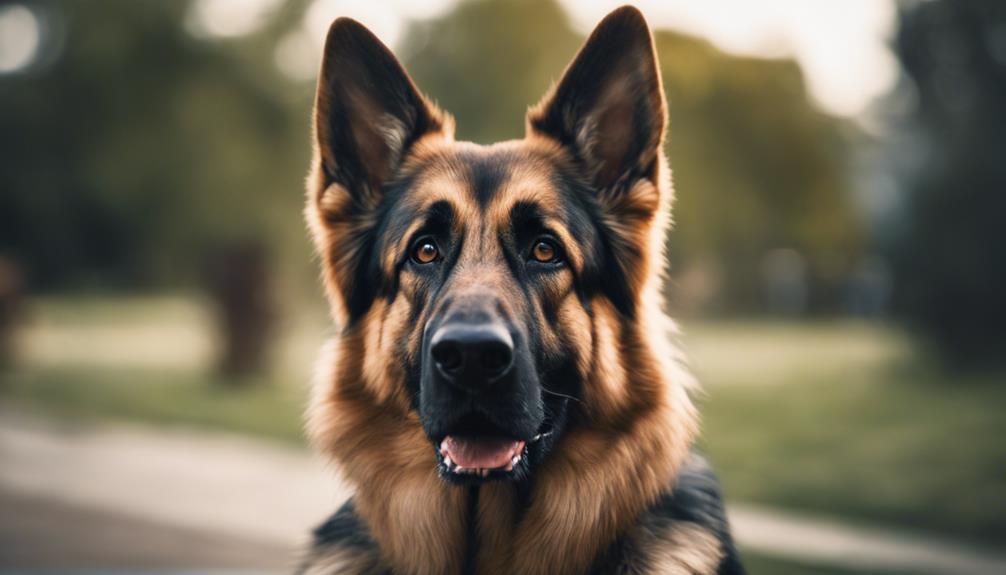
Isabella German Shepherds exhibit loyalty, confidence, and intelligence, defining them as dogs with a protective instinct and gentle demeanor. Their loyalty makes them devoted companions, forming strong bonds with their families. This breed's confidence enables them to excel in various tasks, from obedience training to protection work. Their intelligence allows them to quickly learn commands and adapt to different situations, making them versatile and responsive to training.
Early training and socialization are crucial for shaping the behavior of Isabella German Shepherds. Proper guidance helps channel their protective instincts in positive ways, ensuring they become well-mannered and well-adjusted pets. When socialized from a young age, Isabella GSDs exhibit a gentle nature, particularly with children, making them ideal family pets.
To maintain their well-being, Isabella German Shepherds require daily exercise and mental stimulation. Engaging in activities such as walks, playtime, and training sessions for 1-2 hours a day helps keep them physically fit and mentally sharp. Supervision during playtime, especially with children, is essential to promote a harmonious relationship and prevent any potential misunderstandings. By providing the necessary training, socialization, exercise, and supervision, Isabella German Shepherds can thrive as loyal, confident, and gentle family companions.
Frequently Asked Questions
How Rare Is Isabella German Shepherd?
Isabella German Shepherds are exceptionally rare due to their diluted liver coat coloration, stemming from specific gene combinations. This unique color variation makes them highly sought after, contributing to their exclusivity and higher price range.
What Is the Rarest Type of German Shepherd?
The rarest type of German Shepherd is the Isabella German Shepherd with its unique dilute liver shade coat color. This variation requires specific genetic combinations, making it a prized rarity among enthusiasts and breeders.
How Do You Get an Isabella German Shepherd?
To get an Isabella German Shepherd, you must understand the breeding process involving the liver and dilution genes. Both parents need to carry and pass on these genes. Isabellas have a unique coat color, specific health considerations, training needs, grooming routines, and exercise requirements.
What Makes German Shepherds Unique?
German Shepherds are unique due to their intelligence, loyalty, versatility, and protective instincts. They are trainable, obedient, active, agile, alert, fearless, loving, and affectionate. These beautiful dogs are family-friendly, social, energetic, playful, and excel in working and service roles.
Conclusion
In conclusion, Isabella German Shepherds are truly a one-of-a-kind breed with their rare coat color variation and unique genetic makeup. Their striking appearance, coupled with their loyal and intelligent nature, make them a standout companion for those willing to provide the necessary care and attention. Despite their susceptibility to certain health issues, the love and devotion they show their owners are unmatched. Owning an Isabella GSD is like having a rare gem in your household.
